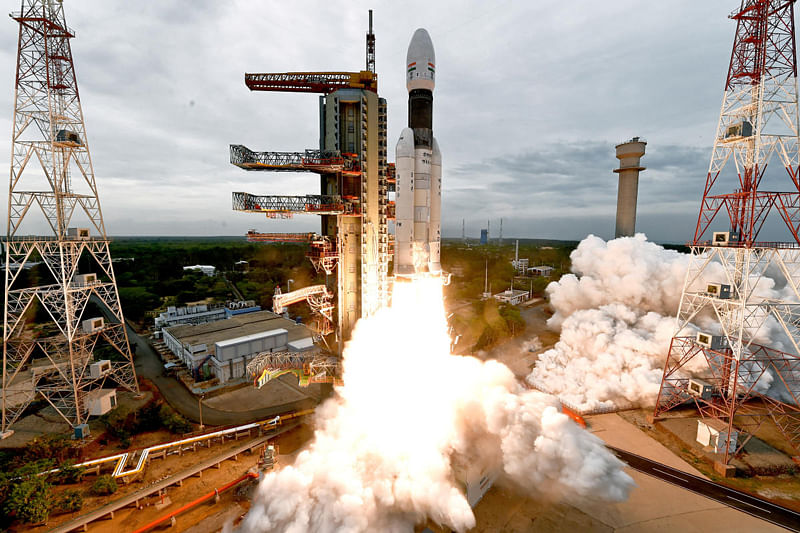
On September 7, when Chandrayaan-II is expected to make a soft landing near the south pole of the moon, scientists at the Indian Space Research Organisation (ISRO) will experience “15 minutes of terror” while ensuring a safe landing.
The satellite, which took off on Monday at 2.43 pm from the Sathish Dhawan Space Centre (SDSC), is expected to carry out scientific experiments to explore unexplored areas in the moon.
After 48 days, the satellite will make a soft launch near the south pole – if it happens, India would write itself into history as the first country to have landed in this part of the moon.
Addressing scientists after the launch, ISRO chief K Sivan said scientists would carry out 15 “very crucial manoeuvres” in the next one-and-a-half-months before bringing the satellite around the moon to place it.
“On the landing day, we are going to experience 15 minutes of terror to ensure landing is safe,” Sivan said in his nearly 10-minute address to his colleagues.
Explaining in detail the efforts taken to rectify the technical snag that led to aborting the mission last week, Sivan said the ISRO “bounced back with flying colours” exactly a week after the snag was identified.
“Immediately after the technical snag was observed in an intelligent way one week back, the entire team of ISRO swung into action. In fact, the work done in the next 24 hours after the snag was mind-boggling and the vehicle was brought back to normal quickly and the root cause of the snag was identified,” the ISRO chief said.
The snag was corrected in 24 hours and for the next one-and-a-half-days, many required tests were conducted, and the vehicle was handed over for action. He also shared that the performance of the launch vehicle, GSLV-III, also increased by 15% than the earlier mission.
“For the last 1.5 years, the satellite team really burnt the midnight oil to ensure that the suggestions given by the national committee are incorporated. The launch vehicle was almost reworked, and these scientists worked without any break,” Sivan said.
ISRO officials said the Vikram lander is designed to function for one lunar day, which is equivalent to about 14 Earth days and with the capability to communicate with IDSN at Byalalu near Bengaluru, as well as with the Orbiter and Pragyan rover.
They added Chandrayaan II will be aided in achieving its mission by some of India’s most advanced engineering marvels. Its composite module, which comprises technology and software developed across the country, includes a wholly indigenous rover and first landed capable of executing a ‘soft landing.’
Deccan Herald is on WhatsApp Channels | Join now for Breaking News & Editor's Picks